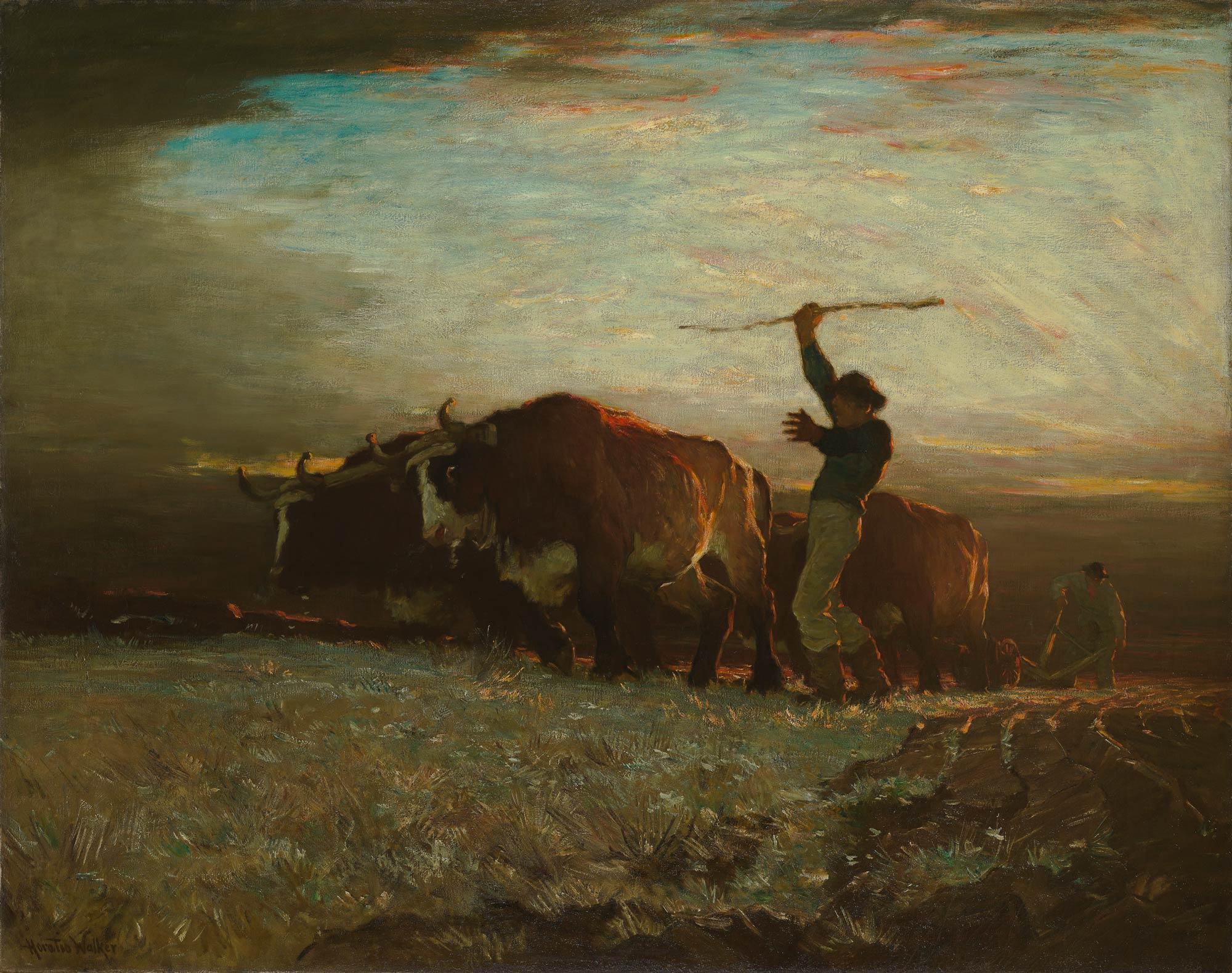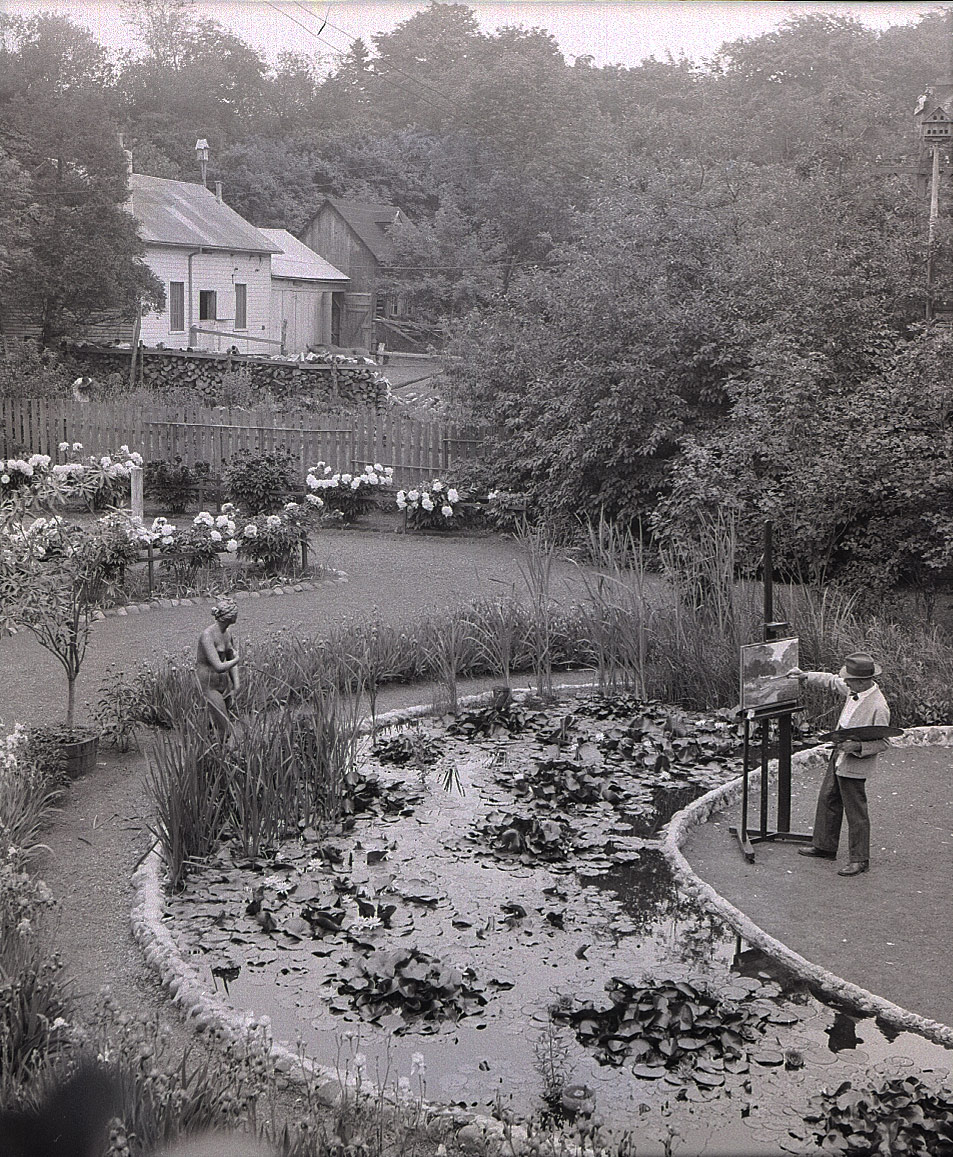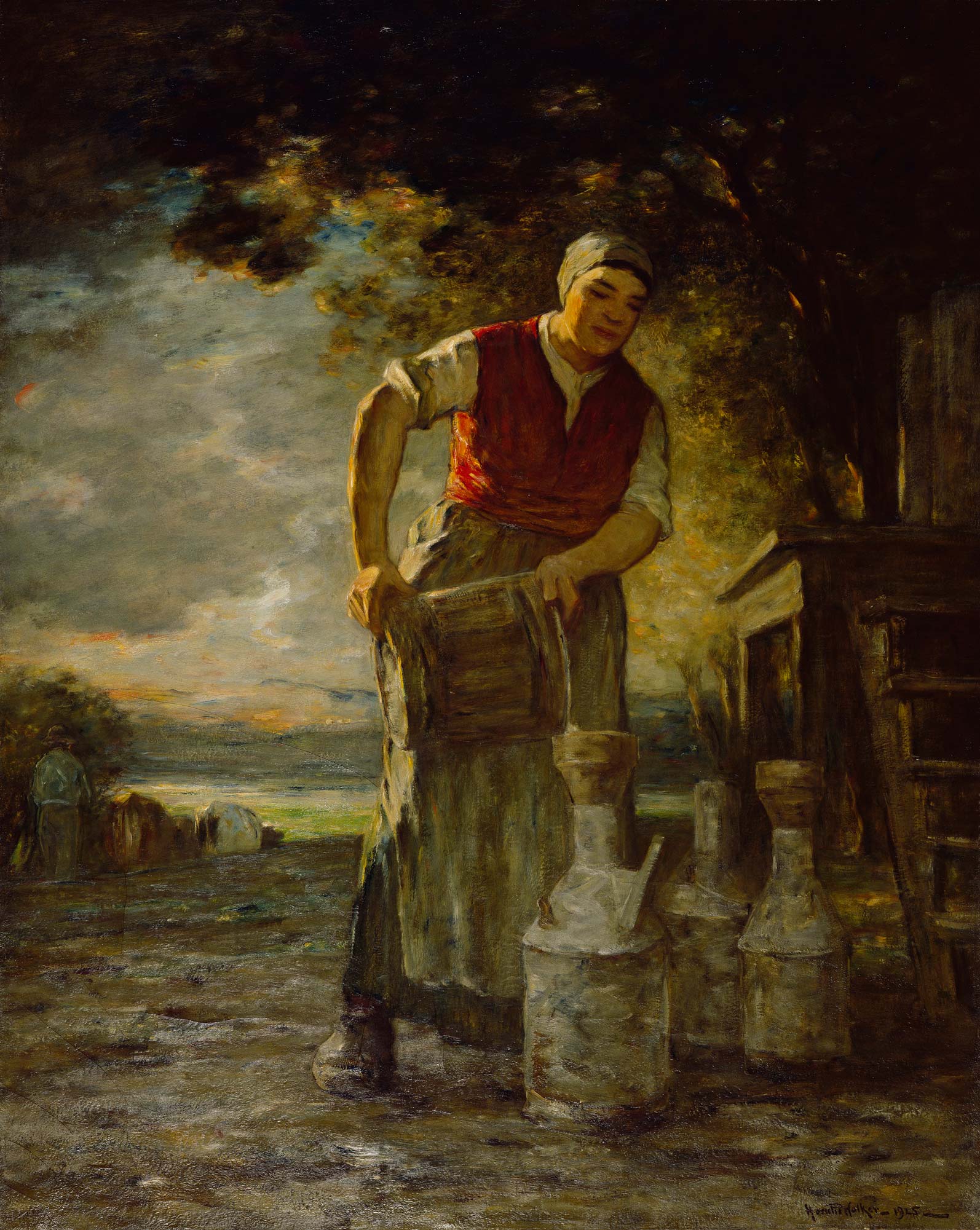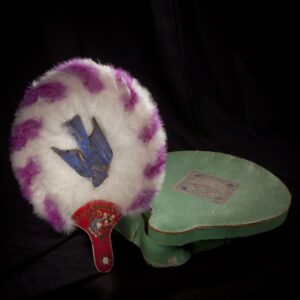Horatio Walker (1858–1938)

Horatio Walker, Labour aux premières lueurs du jour (Ploughing—The First Gleam), 1900
Oil on canvas, 153 x 193.9 cm
Musée national des beaux-arts du Québec, Quebec City
The work of Horatio Walker glorified the French Canadian rural tradition at a time when the world was undergoing fundamental change. The liberal government of Louis-Alexandre Taschereau (1867–1952) supported the artist by acquiring his paintings for the new Musée de la province (now the Musée national des beaux-arts du Québec), inaugurated in 1933. Among these works is Labour aux premières lueurs du jour (Ploughing—The First Gleam), considered Walker’s masterpiece and exhibited in New York shortly after its creation. The farmer silhouetted against the first light of dawn, the effort of the animals, and the painting’s imposing scale all contribute to the spectacular impact of this work, an heir to the French realist tradition.
Walker was born in Listowel, Upper Canada, in 1858. The early stages of his career took him to Toronto in 1873 and then to New York in 1876, but in 1883, he established a studio in Quebec City, at the Clarendon Hotel in the Upper Town. That same year, he moved to Île d’Orléans, which would become his artistic domain—a place he affectionately referred to as “the sacred temple of the muses.” In 1888, Walker purchased a home in the village of Sainte-Pétronille, on the western tip of the island. He decided to settle there permanently in 1909, following the construction of an adjoining studio.


“Originally from Ontario, Horatio Walker achieved prestige and renown in the United States—more so than any other Canadian painter of his generation—with works celebrating the rural traditions of his adopted province.” At the height of his fame in the United States and Europe, Walker—nicknamed the Millet of America, after the French painter Jean-François Millet (1814–1875)—was the worthy successor to the landscape painters of the Barbizon and Hague schools. His artistic influences are evident in the works of J.M.W. Turner (1775–1851), Jean-Baptiste-Camille Corot (1796–1875), and Théodore Rousseau (1812–1867), as well as Millet, whose pastoral scenes, such as Le semeur (The Sower), 1850, Walker studied closely. He responded to Millet’s legacy with works like La traite du matin (The Morning Milking), 1925.
A skilled draftsman, proficient in multiple drawing techniques (charcoal and ink) and painting methods (watercolour and oil), and with a modest educational background in photography under John Arthur Fraser (1838–1898) and William Notman (1826–1891) in Toronto, Walker carved out an enviable reputation among admirers of pastoral art, which was in vogue in North America between 1880 and 1930. His success was cemented by his admission into various artistic associations and the acquisition of his works by major museums. In 1911, the National Gallery of Canada purchased Bœufs à l’abreuvoir (Oxen Drinking), 1899, and the Metropolitan Museum of Art in New York purchased The Harrower, c.1890–95.
Shortly after the creation of the École des beaux-arts de Québec in 1922, the most deserving students were invited to meet the elderly master at his estate on Île d’Orléans. But following Walker’s death in 1938, his fame waned. His legacy faded into obscurity during the Quiet Revolution in the 1960s, until the Musée national des beaux-arts du Québec secured his reputation with a retrospective exhibition in 1986.

 About the Author
About the Author
 More Online Art Books
More Online Art Books
 Acknowledgements
Acknowledgements